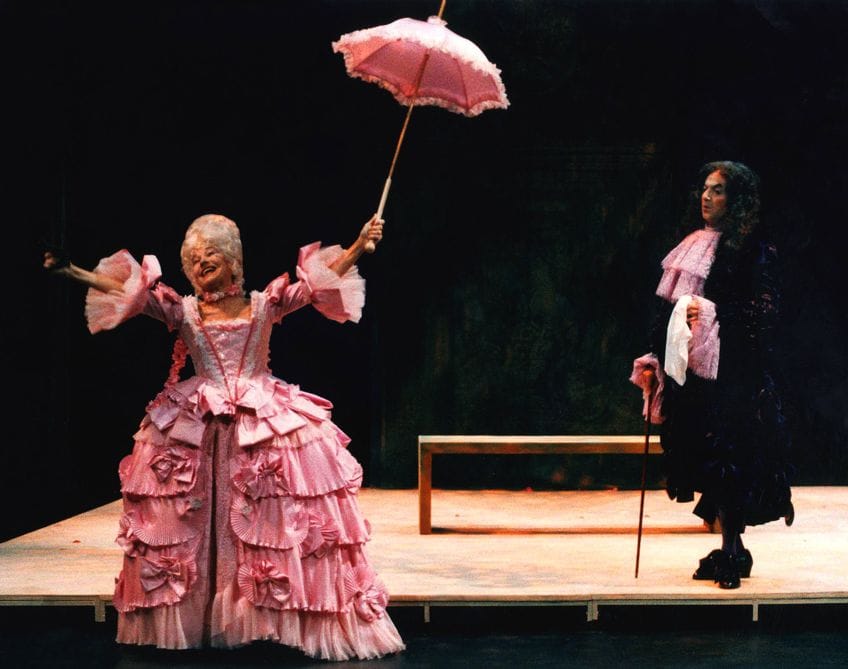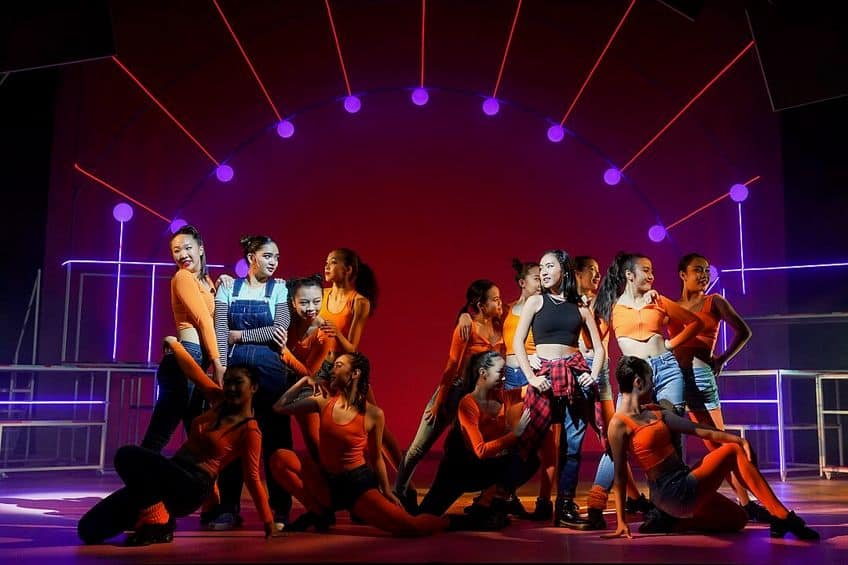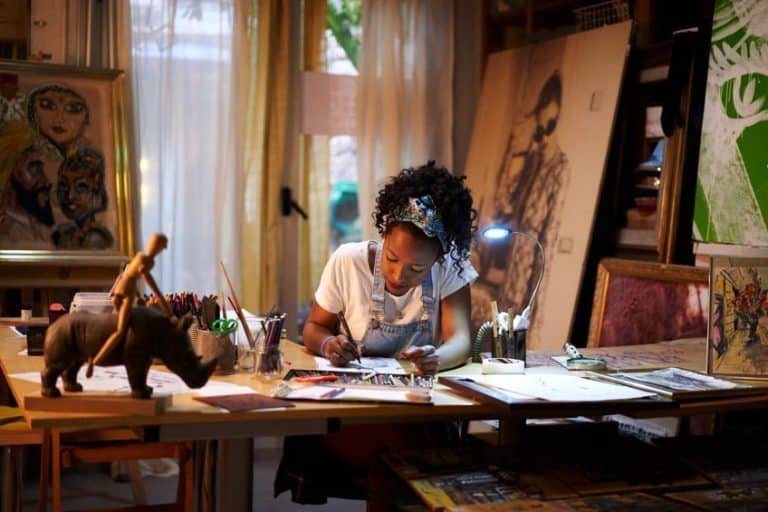Theatre Art – Human Storytelling Through Performance
Theatre art, a captivating blend of performance, storytelling, and visual spectacle, has a rich history spanning centuries and cultures. From ancient Greek amphitheatres to modern Broadway stages, theatre has evolved into a multifaceted art form that engages audiences on emotional, intellectual, and aesthetic levels. This article delves into the fascinating world of theatre art, exploring its origins, key elements, notable figures, and enduring impact on society and culture. Join us on a journey through the enchanting realm of theatrical expression and discovery.
Table of Contents
Key Takeaways
- Theatre art integrates multiple creative disciplines to produce a live storytelling experience.
- It has historical roots in ancient Greece and has evolved to reflect cultural changes.
- Contemporary theatre is marked by an ever-evolving range of styles and technology.
Foundations of Theatre Art
Theatre art stands as a crucial component of the dramatic arts, intertwining various disciplines into one cohesive expression. It is a space where storytelling comes to life through a collaborative and multifaceted performance involving actors, directors, set designers, and others. Traditionally, theatre has been an art form cherished for its unique ability to blend speech, gesture, and music, conveying real or imagined events in front of a live audience. The experience extends beyond visual appreciation, often aiming to stir the audience’s emotions and provoke reflection through the complexities of drama.

Behind the scenes, theatre is a complex art form rooted in ancient traditions that continue to evolve. The foundations of theatre art were laid in Greece, but throughout history, it has adapted to reflect the changing tastes and cultural narratives of societies around the world. Modern theatre continues to explore new narratives, methods, and technology, thus constantly redefining the boundaries of performance and audience engagement. This persistent transformation keeps theatre a relevant and dynamic form of cultural commentary and creative expression.
Historical Development
Theater as an art form has evolved over millennia, with its earliest roots traceable back to ancient Greek festivals such as Dionysia, where tragedy, comedy, and the satyr play emerged. Influential Greek dramatists like Aeschylus, Sophocles, and Euripides laid the groundwork for Western drama in the city-state of Athens. This classical form later found new expression through the works of William Shakespeare, most notably in plays like Hamlet.
Theatre has long been intertwined with religion, politics, and law, reflecting the societal values and conflicts of its times.
Key Elements
Theatre art encompasses various elements, each contributing to the overall experience of a theatrical production:
- Script and dramatic literature: The blueprint of the performance, often encompassing rich dramatic vocabulary and themes.
- Acting and actors: Live performers who embody characters and convey the narrative.
- Director: The individual who interprets the script and guides the creative vision of the production.
- Stagecraft: Includes set design, lighting, sound, and all other technical aspects that create the spectacle.
- Audience: Essential for the completion of the theatrical experience as spectators of the art.

Theoretical Framework
Aristotle’s Poetics laid down the foundational theoretical framework for understanding drama, identifying key components like plot, character, and diction that are still relevant today.
Theorists continue to explore the dynamics of representation, theatricality, and the relationship between performance and audience.
Genres and Styles
Theatre genres range from tragedy and comedy to farce, opera, and musical theatre. Each genre has its own conventions, such as stock characters in comedies or the heightened emotions of tragical works. Styles can be as diverse as drama, satire, and historical epics, often characterized by their unique usage of dialogue, visual elements, and thematic content.

Global Perspectives
Theatre is a global phenomenon with myriad forms. Western theatre draws heavily from its Greek and Roman ancestry, while African theatre incorporates ritual, dance, and storytelling traditions.
Each culture presents a unique perspective on theatre, influencing the rich tapestry of the performing arts worldwide.
The Theatre Experience
The theatre is a dynamic art form that encompasses a multitude of elements and roles, each integral to delivering a captivating live performance to an engaged audience.

Production Elements
Drama unfolds on the stage, and each act reveals the intricacies of storytelling enhanced by the lighting, theatre music, set design, and costume design. The stage is illuminated not just by lights but by the clever use of make-up and sound effects which set the tone and atmosphere.
Theatre is a dance of many elements coming together to bring a story to life.
- Lighting: Pivotal in mood setting and directing the audience’s focus.
- Set design: The visual background that transports the spectator to different worlds.
- Costume design: Reinforces the period and personality of each actor.
- Sound effects and music: Auditory elements that support the narrative and evoke emotions.
Roles and Responsibilities
In a theatre production, the hierarchy of roles from the director to the stage manager orchestrates the ensemble of actors and actresses to breathe life into the performance. The theatre company encompasses a collection of individuals, each with specialized tasks, managed and unified by the director to achieve a coherent vision.
- Director: The creative visionary who guides the overall aesthetic of the production.
- Stage manager: The organizational backbone ensuring the smooth execution of shows.
- Actors and actresses: Live performers embodying characters with authenticity.

Audience Engagement
The house, brimming with spectators, is a testament to the allure of the live theatre experience. Audience participation and the energy of being part of an event as it unfolds live is unique to this art form.
- Audience: The collective group whose reactions and participation can influence the performance.
- Engagement: Fostered through powerful acts, direct interaction, or themes that resonate with the spectators.
Through these various elements and roles, the theatre creates an immersive and uninterrupted connection between performers and audience, making each experience unique and memorable.
Contemporary Theatre and Its Evolution
Contemporary theatre reflects a vibrant evolution that intertwines technology, cultural discourse, and innovative formats. It continues to adapt, pushing the boundaries of traditional theatrical production and subject matter to resonate with modern audiences.

Innovation in Theatre
Contemporary theatre artists are experimenting with multi-disciplinary collaborations that merge performing arts with other forms like painting, opera, and digital platforms. This synergy has led to new formats where physical and digital spaces converge, offering audiences unprecedented visual and auditory experiences.
Educational institutions now incorporate these innovations, preparing future artists for a technologically integrated performance landscape.
Theatre and Society
Theatre has a long-standing relationship with societal commentary, and that hasn’t changed. Now, the focus frequently shifts towards contemporary social issues, and cultural representation has become a crucial part of modern productions. Theatrical pieces openly tackle subjects of restoration and change within societies, leveraging the intimate connection between actors and spectators to prompt reflection and dialogue.

Future Trajectories
Looking forward, the evolution of theatre is poised to leverage online platforms and digital technology even more. Educational programs are already beginning to merge technology and the performing arts to train the next generation of theatre artists. This intersection is not only a reflection of societal progression but also an indication of the future where online presence and physical staging could provide new narrative possibilities, ensuring the art form remains relevant and engaging.
Theatre art stands as a testament to human creativity and expression, offering a vibrant tapestry of stories, emotions, and ideas woven together on stage. Through its power to entertain, provoke thought, and inspire change, theatre continues to captivate audiences worldwide. From classic plays to innovative experimental performances, the enduring allure of theatre art lies in its ability to transcend time and connect us to the shared experiences of humanity. As we applaud the past achievements and eagerly anticipate the future innovations in this dynamic art form, let us continue to celebrate the transformative magic of theatre.
Frequently Asked Questions
What Is the Historical Evolution of Theatre Art?
Theatre art has evolved from ancient Greek tragedies and comedies, through Roman theatrical spectacles, to the medieval mystery plays and Renaissance dramas. This evolution reflects societal changes and technological advancements that have transformed the way stories are told on stage.
What Are Some Notable Examples of Classic Theatre Productions?
Classic theatre productions include Sophocles’ Oedipus Rex, William Shakespeare’s Hamlet, and Molière’s Tartuffe. These works have set benchmarks for storytelling and are studied for their intricate plots, character development, and influence on the genre.
What Academic Paths Are Available for Students Interested in Studying Theatre Arts?
Students interested in studying theatre arts can pursue undergraduate and graduate degrees in performance, directing, playwriting, and design. Institutions like Kalamazoo College and Marymount Manhattan College provide dedicated programs focused on both the theoretical and practical aspects of theatre.
How Do Modern Live Theatre Productions Compare to Historical Ones?
Modern live theatre productions often incorporate advanced technology for set design, lighting, and sound, differentiating them from historical productions. They also tend to explore contemporary themes and may offer more diverse representations on stage, reflecting current societal values.
Isabella studied at the University of Cape Town in South Africa and graduated with a Bachelor of Arts majoring in English Literature & Language and Psychology. Throughout her undergraduate years, she took Art History as an additional subject and absolutely loved it. Building on from her art history knowledge that began in high school, art has always been a particular area of fascination for her. From learning about artworks previously unknown to her, or sharpening her existing understanding of specific works, the ability to continue learning within this interesting sphere excites her greatly.
Her focal points of interest in art history encompass profiling specific artists and art movements, as it is these areas where she is able to really dig deep into the rich narrative of the art world. Additionally, she particularly enjoys exploring the different artistic styles of the 20th century, as well as the important impact that female artists have had on the development of art history.
Learn more about Isabella Meyer and the Art in Context Team.
Cite this Article
Isabella, Meyer, “Theatre Art – Human Storytelling Through Performance.” Art in Context. April 9, 2024. URL: https://artincontext.org/theatre-art/
Meyer, I. (2024, 9 April). Theatre Art – Human Storytelling Through Performance. Art in Context. https://artincontext.org/theatre-art/
Meyer, Isabella. “Theatre Art – Human Storytelling Through Performance.” Art in Context, April 9, 2024. https://artincontext.org/theatre-art/.








